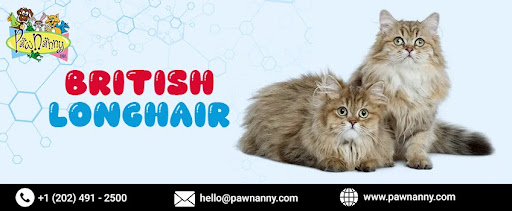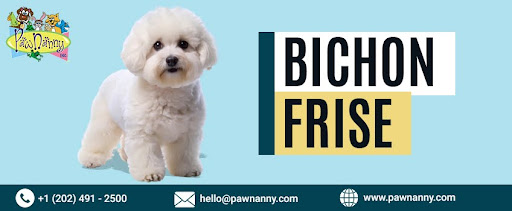
British Longhair
Size: 18-24 inches
Weight: 9-18 pounds
Hypoallergenic: No
Lifespan: 12-20 Years
Behaviour
The British Longhair, known for its luxurious coat and charming appearance, exhibits a distinct behavior that combines gentle affection with a laid-back demeanor. These cats are renowned for their calm and composed nature, making them wonderful companions for families and individuals alike. One notable trait of the British Longhair is their affectionate disposition. They often enjoy being close to their human companions, whether it's cuddling on the couch or simply lounging nearby. They are not overly demanding for attention but appreciate gentle affection and interaction.
British Longhairs are known to be adaptable as seen during pet house sitting services, which makes them well-suited for indoor living. They can thrive in various living environments, from apartments to larger homes, as long as they have enough space to roam and play. Despite their relatively large size, they are not overly energetic cats and tend to be content with moderate exercise. These cats are also known for their intelligence and curiosity. They enjoy exploring their surroundings and engaging in interactive play. Providing them with puzzle toys or play sessions that stimulate their mind can help keep them mentally stimulated and happy.
Another characteristic of British Longhairs is their gentle and tolerant nature, especially towards children and other pets. They are patient and typically get along well with other animals, making them a great addition to multi-pet households.
History
The British Longhair is a charming breed with a rich history intertwined with the development of the British Shorthair cat. While the British Shorthair is known for its robust build and short coat, the British Longhair emerged as a result of intentional breeding efforts to achieve a long-haired version of the beloved British Shorthair. The origins of the British Longhair can be traced back to the early 20th century when breeders in Britain began experimenting with different coat lengths within the British Shorthair population. By selectively breeding cats with longer fur, they eventually established the British Longhair as a distinct breed.
During the mid-20th century, the breed faced challenges and a decline in popularity due to the aftermath of World War II. However, dedicated breed enthusiasts worked tirelessly to preserve and revive the British Longhair, ensuring its continued existence and recognition by cat registries. One of the defining features of the British Longhair is its luxurious coat, which is dense, plush, and comes in various colors and patterns. This breed's temperament is often described as gentle, affectionate, and easygoing, making them wonderful companions for families and individuals alike.
Over time, the British Longhair has gained admirers worldwide for its beauty, personality, and connection to the esteemed British Shorthair lineage. Today, breeders continue to uphold the breed standard, emphasizing not only the stunning appearance of these cats but also their friendly and adaptable nature. With its captivating history and enduring charm, the British Longhair remains a beloved breed cherished by cat lovers everywhere.
Looks & Health
The British Longhair is an elegant and majestic breed known for its striking appearance and robust health. Their looks are characterized by a plush, dense coat, a round face with chubby cheeks, and large, expressive eyes. Their coat comes in various colors and patterns, including solid colors like blue, black, cream, and white, as well as bi-color, tabby, and colorpoint variations. One of the most distinctive features of the British Longhair is their luxurious, flowing coat that requires regular grooming to prevent matting and tangles.
In terms of health, the British Longhair is generally a robust and healthy breed with a long lifespan ranging from 12 to 20 years or more with proper care. They are not particularly prone to specific genetic health issues, but like all cats, they can be susceptible to common feline ailments such as dental problems, obesity, and urinary tract issues. Regular veterinary check-ups, a balanced diet, adequate exercise, and dental care are essential for maintaining their overall health and well-being.
Their temperament is another appealing aspect of the breed. British Longhairs are known for their calm, affectionate, and laid-back nature. They are sociable cats that enjoy human companionship but are also content to entertain themselves when left alone. They are gentle and tolerant, making them suitable companions for families with children and other pets.
Food & Nutrition
The food and nutrition of a British Longhair cat play a crucial role in maintaining their health, vitality, and overall well-being, and should be taken care of during overnight house sitting service. As a medium to large-sized breed with a luxurious long coat, British Longhairs have specific dietary requirements that should be carefully considered by their owners.
Firstly, it's important to provide a balanced and nutritionally complete diet for British Longhairs. This includes a combination of high-quality commercial cat food and occasional supplementation with fresh, lean meats or fish. Choose cat foods that are specifically formulated for their life stage, whether they are kittens, adults, or seniors. Kittens require food rich in proteins, fats, vitamins, and minerals to support their growth and development, while adult cats benefit from a diet that maintains their weight and supports their activity levels. Senior British Longhairs may need food that addresses aging-related concerns such as joint health and digestion.
Protein is a vital component of a British Longhair's diet as it supports their muscle development, immune system, and overall health. Look for cat foods with animal-based protein sources like chicken, turkey, or fish. Fats are also important for providing energy and maintaining healthy skin and coat. Essential fatty acids, such as omega-3 and omega-6, are particularly beneficial for promoting coat luster and skin health in British Longhairs. In addition to proteins and fats, British Longhairs require a balanced intake of vitamins and minerals. These nutrients contribute to various bodily functions, including bone health, immune function, and vision. Ensure that their diet includes adequate amounts of vitamins A, D, E, and B-complex vitamins, as well as minerals like calcium, phosphorus, and taurine.
Hydration is another critical aspect of feline nutrition. Provide your British Longhair with access to fresh, clean water at all times to support their kidney function and overall hydration levels. Lastly, avoid overfeeding your British Longhair to prevent obesity and related health issues. Monitor their weight and adjust their food portions as needed based on their activity level and body condition score. Regular veterinary check-ups can also help ensure that your British Longhair's nutritional needs are being met appropriately.
Conclusion
The British Longhair cat breed is renowned for its majestic appearance, gentle demeanor, and luxurious long fur. As pets, these felines make excellent companions due to their calm and affectionate nature. They are known for being friendly, sociable, and adaptable to various living environments, making them suitable for households with children, other pets, or even single individuals. One of the standout characteristics of the British Longhair is its dense, plush coat, which requires regular grooming to prevent matting and tangles. However, their manageable grooming needs are often outweighed by their loving and loyal temperament. They enjoy lounging around the house, basking in sunny spots, and engaging in interactive playtime with their human family members.
In the wild, British Longhairs would exhibit behaviors typical of domesticated cats' wild ancestors. They would utilize their hunting instincts to stalk and capture prey, showcasing agility and stealth. Their coat would provide camouflage in natural environments, aiding in their survival and hunting endeavors. However, due to their domestication and reliance on human care, British Longhairs as pets do not engage in these wild behaviors but instead thrive in a safe and comfortable home environment where they can receive love, attention, and proper care. For more information or to visit our pet house sitting services in Fairfax VA, visit Pawnanny.com .










